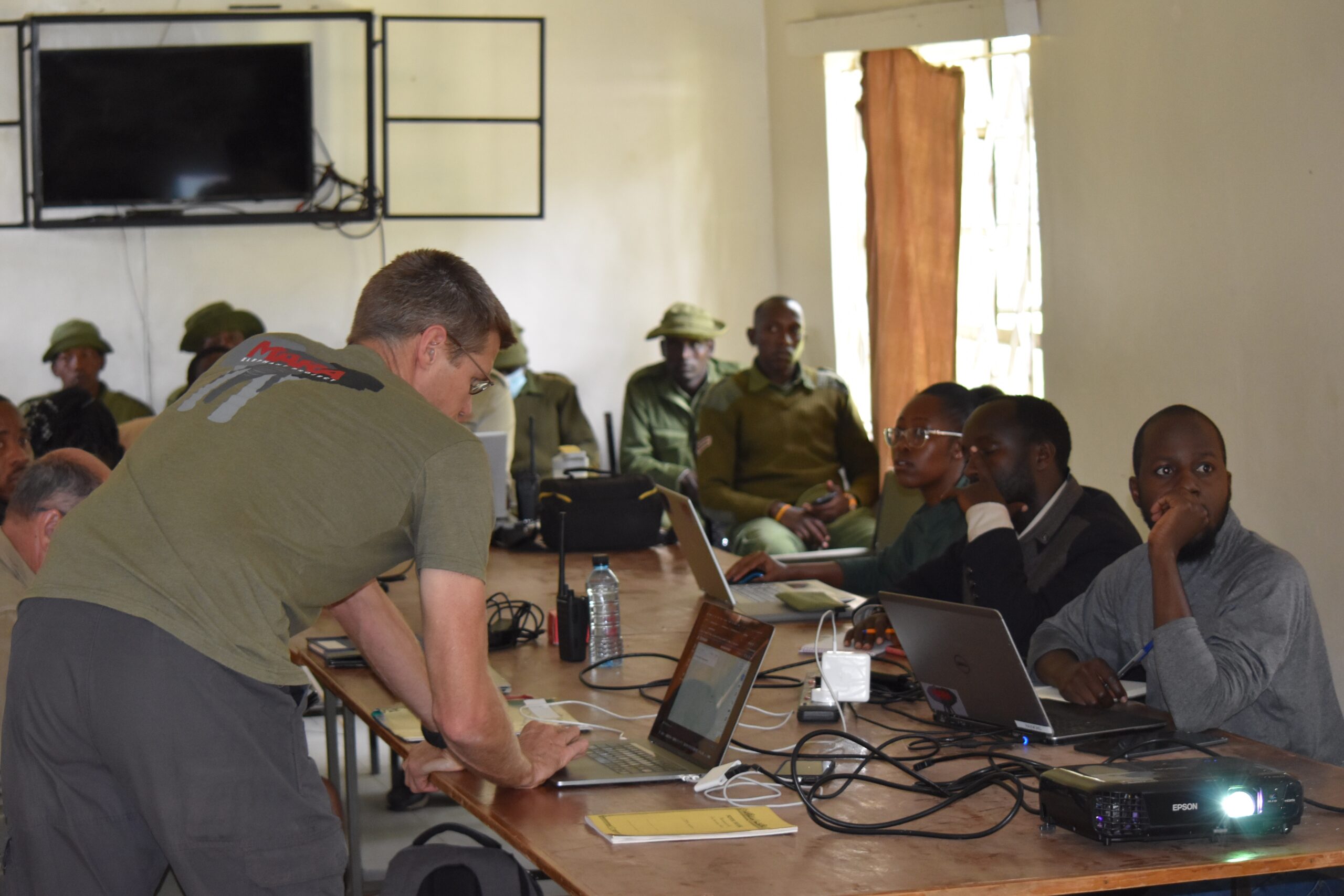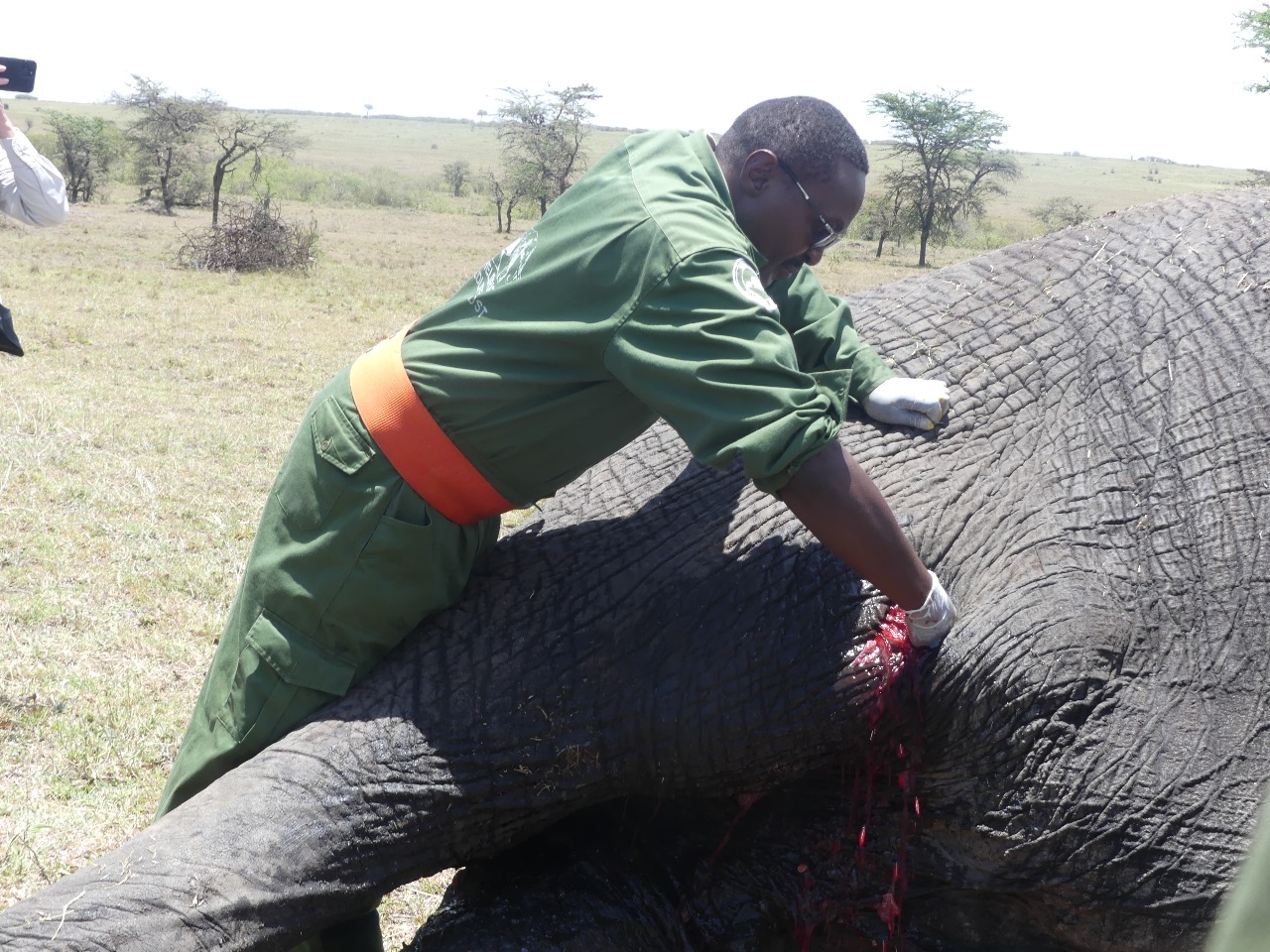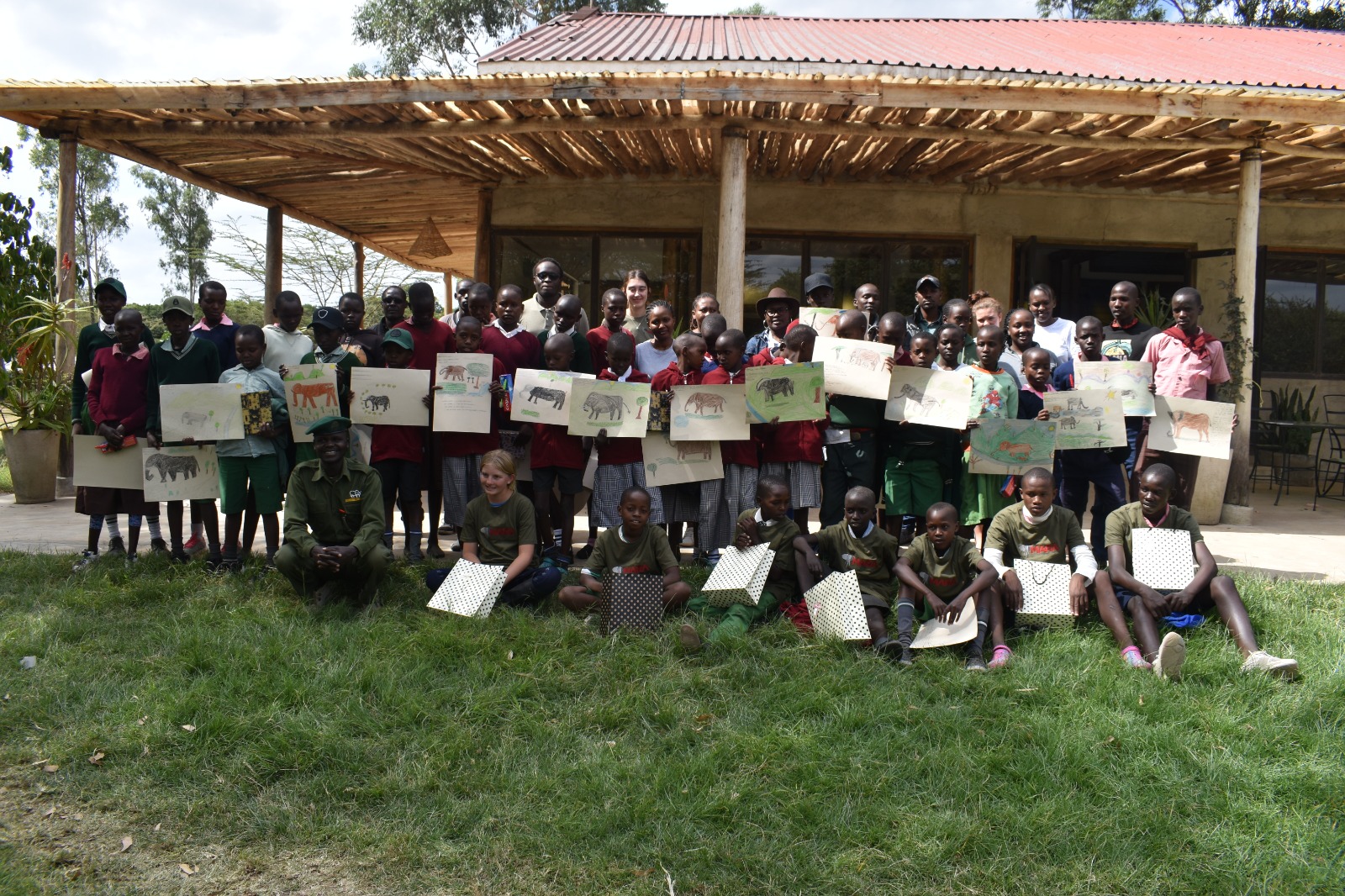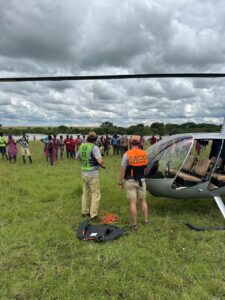In the third quarter, the Mara Elephant Project Research Department staff conducted an EarthRanger training for our partners at Mara North Conservancy. EarthRanger is a conservation software that MEP uses to monitor our assets in real time and effectively manage our wildlife and habitat protection activities and impact. MEP is committed to supporting conservation managers with EarthRanger training to advance data driven conservation for the benefit of all wildlife and wild spaces in the Mara.
The department welcomed two new members, Francis Odero and Eugene Kuloba, who have strong geospatial skills and will be helping with data analyses at MEP. The Ecoscope project continues to advance thanks to work from Ray Rao who produced a beta-version of the Ecoscope Downloader software – a graphical user interface that leverages the EarthRanger downloading functionality in our Ecoscope python library.
 Several members of the department attended the inaugural Wildlife Research and Training Institute Wildlife Scientific Conference in Naivasha. It was a very well attended conference and a great opportunity for MEP to collaborate with our wildlife research partners. They also traveled to Rwanda to attend the Business of Conservation Conference, and a workshop hosted by the Smithsonian in Narok on aerial monitoring methods using AI, which demonstrated the progress being made on counting wildlife using computer vision here in the Mara.
Several members of the department attended the inaugural Wildlife Research and Training Institute Wildlife Scientific Conference in Naivasha. It was a very well attended conference and a great opportunity for MEP to collaborate with our wildlife research partners. They also traveled to Rwanda to attend the Business of Conservation Conference, and a workshop hosted by the Smithsonian in Narok on aerial monitoring methods using AI, which demonstrated the progress being made on counting wildlife using computer vision here in the Mara.
In the third quarter, MEP’s two field assistants working on mapping fences, roads and landcover ground-truthing points using motorbikes and MEP’s TerraChart app recorded 1,417 km of fences and 72 LCC points.
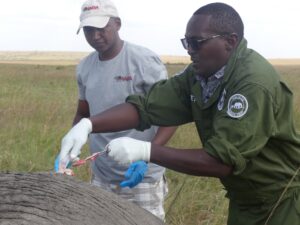 MEP rangers and researchers assisted our partners Kenya Wildlife Service (KWS) and Sheldrick Wildlife Trust (SWT) with a total of 10 elephant treatments in the third quarter. In July, the MEP long-term monitoring (LTM) team assisted KWS Vet Dr. Njoroge from the SWT Mobile Vet Unit with two elephant treatments. One on a bull known as individual 948 in ElephantBook had a spear wound on his chest. The LTM team were joined by MEP and Lemek Conservancy to help, and the treatment was successful, and the elephant was swiftly back on his feet. Not long after this treatment, the LTM team received a report from a tourism partner that there was an injured bull elephant in Mara North Conservancy. Once on the scene, the LTM team identified him as individual 28. MEP responded with the helicopter and the LTM team to assist during the bull’s treatment for two arrow wounds. The arrows were successfully removed from his torso and front leg and the injuries treated. In September, MEP received a report of an injured bull elephant in need of treatment. The bull is individual 1,150 and the MEP LTM team assisted KWS Vet Dr. Njoroge from the SWT Mobile Vet Unit to help with the treatment and Tropic Air provided aerial assistance. The suspected abscess causing swelling on his right hind leg was cleaned and treated.
MEP rangers and researchers assisted our partners Kenya Wildlife Service (KWS) and Sheldrick Wildlife Trust (SWT) with a total of 10 elephant treatments in the third quarter. In July, the MEP long-term monitoring (LTM) team assisted KWS Vet Dr. Njoroge from the SWT Mobile Vet Unit with two elephant treatments. One on a bull known as individual 948 in ElephantBook had a spear wound on his chest. The LTM team were joined by MEP and Lemek Conservancy to help, and the treatment was successful, and the elephant was swiftly back on his feet. Not long after this treatment, the LTM team received a report from a tourism partner that there was an injured bull elephant in Mara North Conservancy. Once on the scene, the LTM team identified him as individual 28. MEP responded with the helicopter and the LTM team to assist during the bull’s treatment for two arrow wounds. The arrows were successfully removed from his torso and front leg and the injuries treated. In September, MEP received a report of an injured bull elephant in need of treatment. The bull is individual 1,150 and the MEP LTM team assisted KWS Vet Dr. Njoroge from the SWT Mobile Vet Unit to help with the treatment and Tropic Air provided aerial assistance. The suspected abscess causing swelling on his right hind leg was cleaned and treated.
The Enkutoto area where the MEP Co-Existence Farm is located experienced dry conditions at the start of the third quarter and welcomed some rain by the latter part of the quarter. There was low crop predation which can be associated with the remaining high number of non-palatable crops being grown on the farm. Five crops will no longer be grown in the farm after they have surpassed the required five re-plant times and they’re being replaced by cassava, castor plant, sage, groundnut and sugarcane.
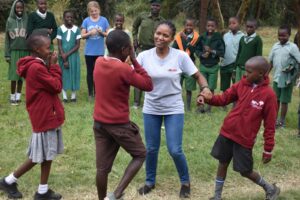 An exciting new venture was launched in the third quarter. The MEP Farm team started a conservation club collaboration with local schools to engage the next generation of Kenyan conservationists. Five primary schools were identified, and an activity plan was created for 2023 and 2024. The team started by visiting all of the schools to give a basic overview of their work and the work of MEP. Then, the first event took place in July on World Ranger Day and featured MEP rangers joining the students to talk about their work as a ranger and hoping to engage young people to consider a job in conservation. The second event took place in August for World Elephant Day. This one was designed to be more elephant focused and was in partnership with Enoonkishu Conservancy. There was an elephant drawing competition and educational presentations designed to educate about conservation and empower students to take action. Finally, there were two events in September, one focused on collecting litter and highlighting the importance of the concept of reduce, reuse and recycle and one focused on reducing food waste and the impact that has on the environment. Kampur Travel Diaries granted MEP the funds to launch this initiative and we’re extremely grateful.
An exciting new venture was launched in the third quarter. The MEP Farm team started a conservation club collaboration with local schools to engage the next generation of Kenyan conservationists. Five primary schools were identified, and an activity plan was created for 2023 and 2024. The team started by visiting all of the schools to give a basic overview of their work and the work of MEP. Then, the first event took place in July on World Ranger Day and featured MEP rangers joining the students to talk about their work as a ranger and hoping to engage young people to consider a job in conservation. The second event took place in August for World Elephant Day. This one was designed to be more elephant focused and was in partnership with Enoonkishu Conservancy. There was an elephant drawing competition and educational presentations designed to educate about conservation and empower students to take action. Finally, there were two events in September, one focused on collecting litter and highlighting the importance of the concept of reduce, reuse and recycle and one focused on reducing food waste and the impact that has on the environment. Kampur Travel Diaries granted MEP the funds to launch this initiative and we’re extremely grateful.
"A key part of my job is interacting with the local communities because identifying an elephant-friendly crop is useless unless farmers agree to adopt a positive view to alternative crops. While we work on the adult generation, we’re also committed to starting the next generation out on the right foot so they can better serve the wildlife, ecosystem and planet."
Co-Existence Farm Manager Abigael Pertet
Collared elephants Kiambi and Polaris were monitored by MEP rangers in July, Fred in August (above) and Kiambi in September alongside a herd of six (below).
In August, the LTM team monitored individual 2 from ElephantBook. This bull elephant, known internally as Flopsy, has two distinguishable characteristics, he has no tail, and his left ear is floppy.
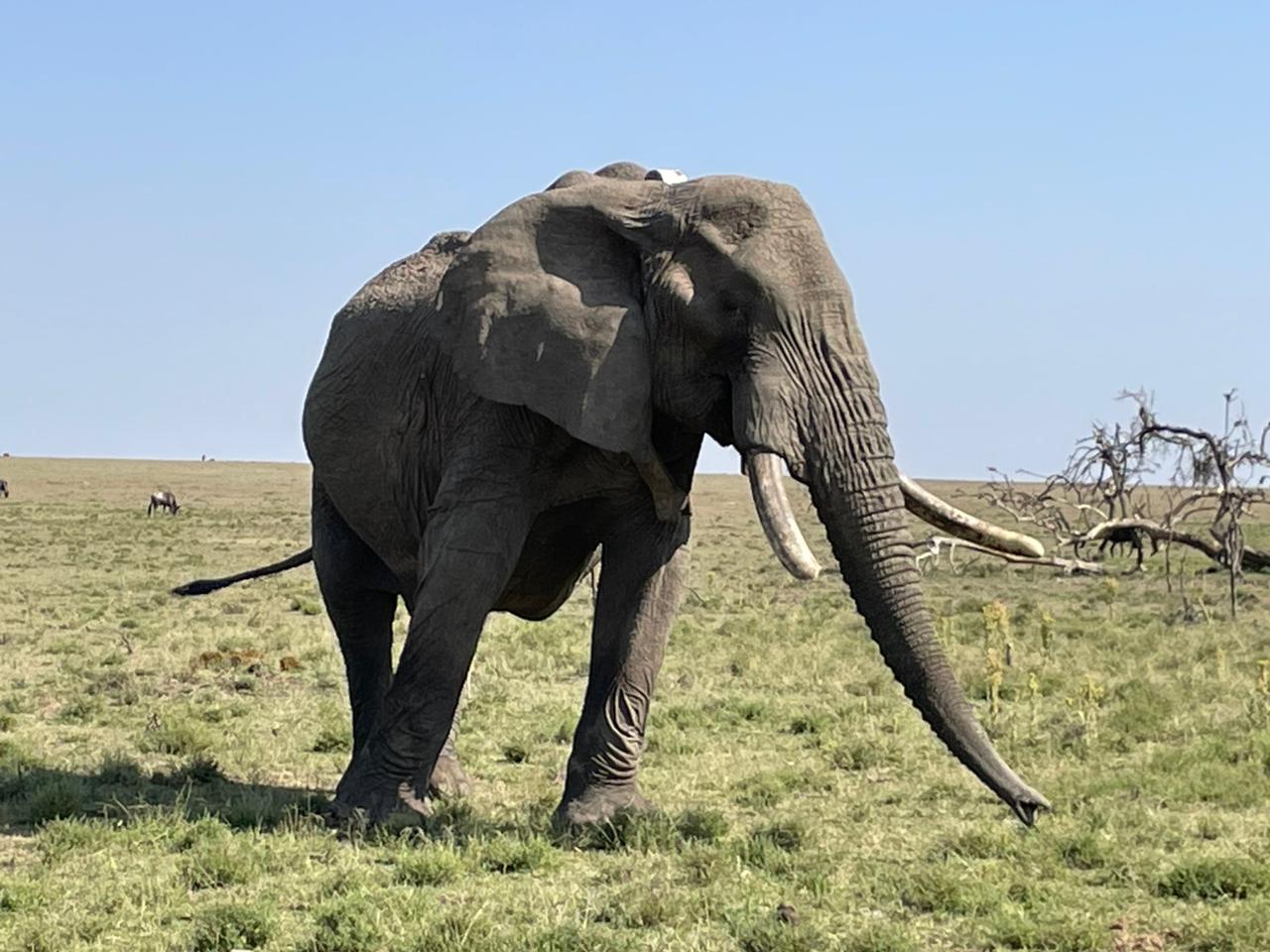
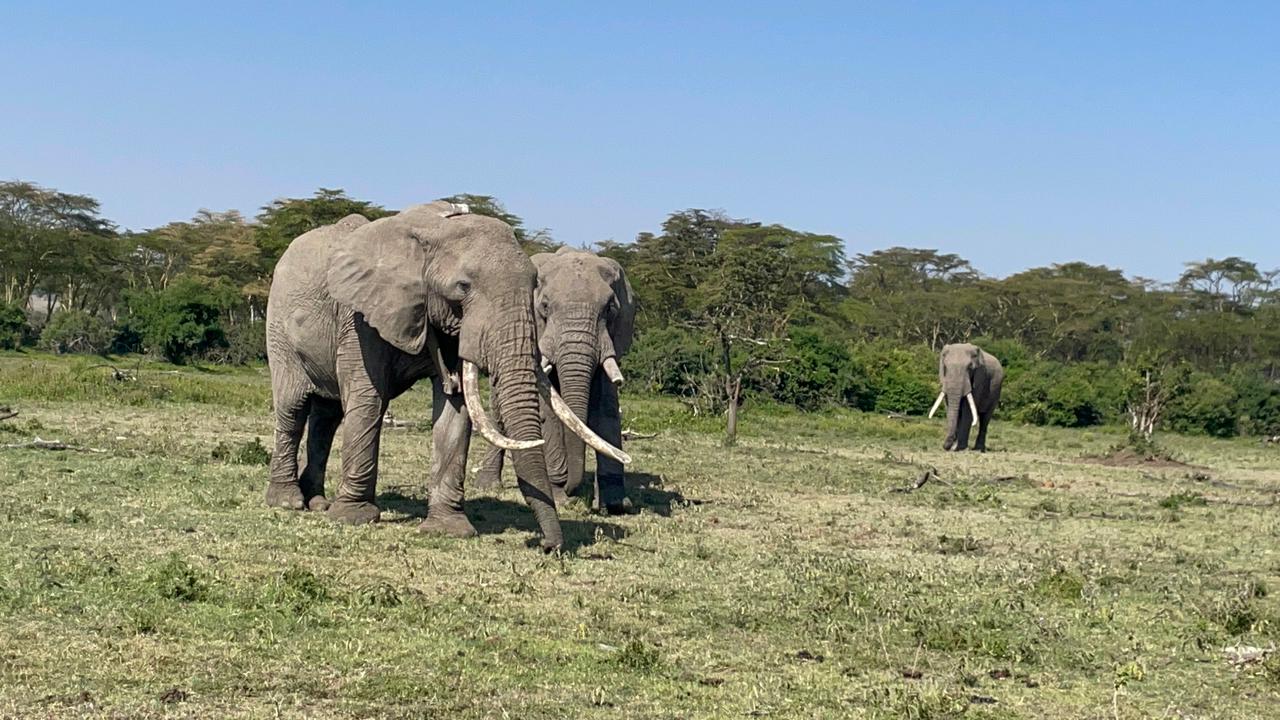
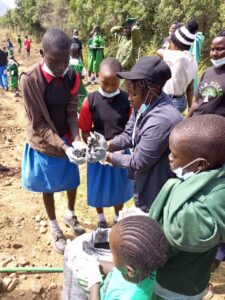 Finally, on September 16, the LTM team partnered with the Connected Planet Foundation to host an environmental education experience for students from Sekenani and Ololchurra conservation clubs. The children threw seedballs from Seedballs Kenya in a degraded area in the Mara. Our team also joined the 15 students for a game drive in the Maasai Mara National Reserve.
Finally, on September 16, the LTM team partnered with the Connected Planet Foundation to host an environmental education experience for students from Sekenani and Ololchurra conservation clubs. The children threw seedballs from Seedballs Kenya in a degraded area in the Mara. Our team also joined the 15 students for a game drive in the Maasai Mara National Reserve.
